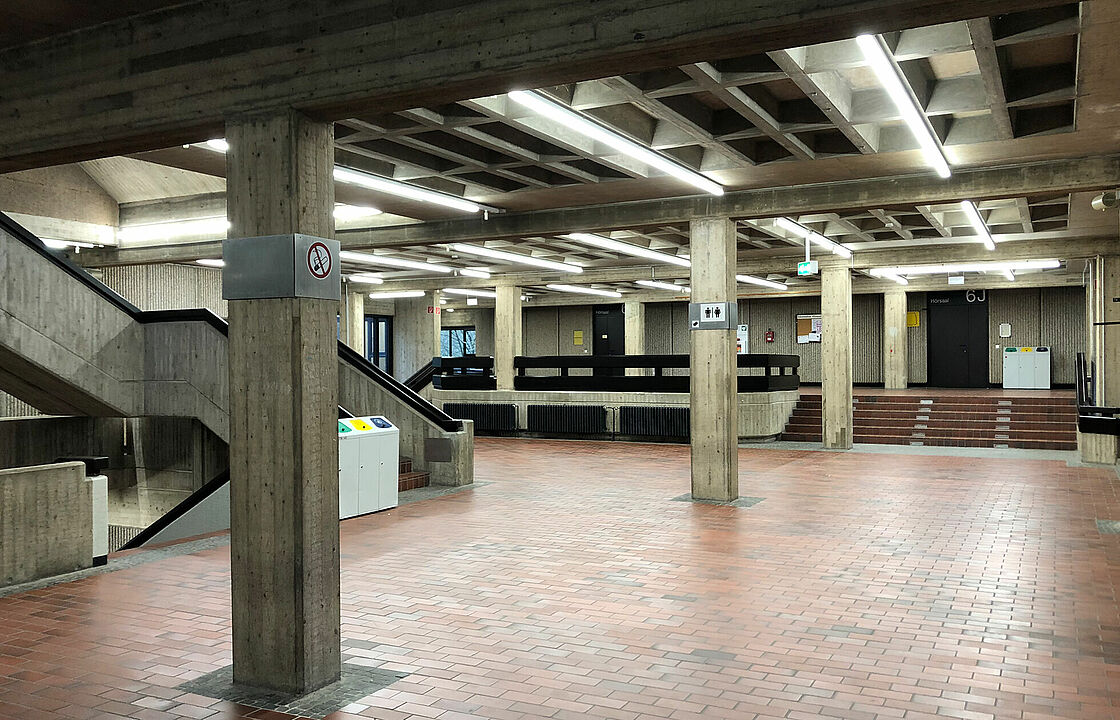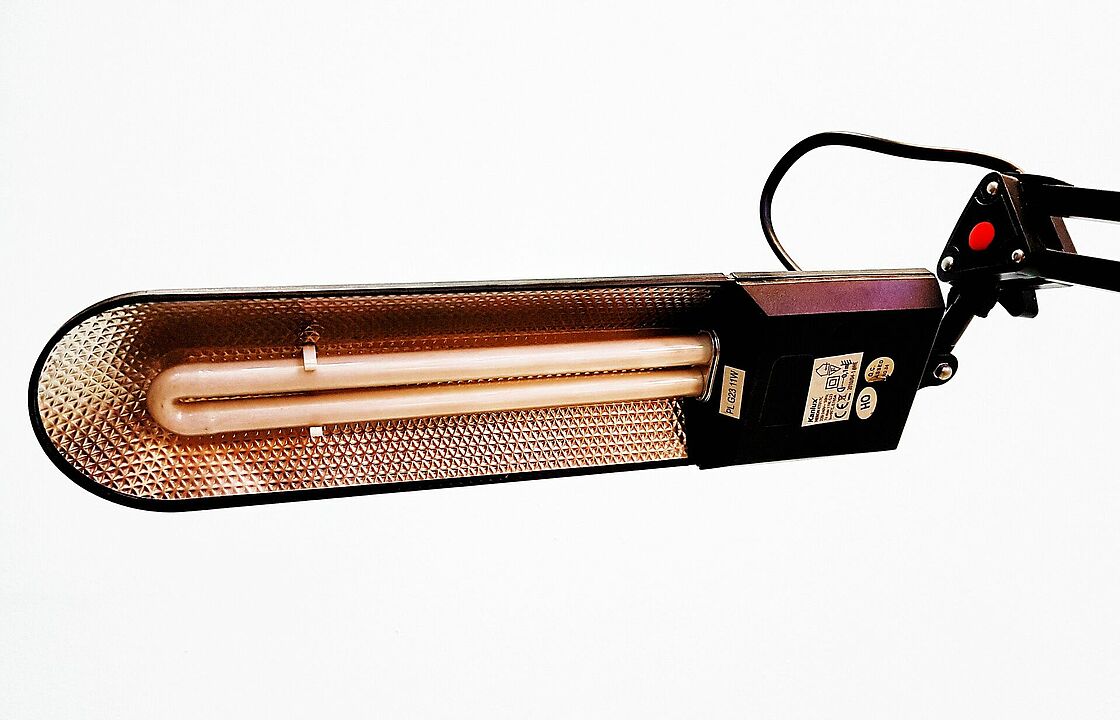All lights are being modernised on a step-by-step basis as LEDs are real energy savers. Following conversion of the lighting in the corridors outside the lecture theatres in building complexes 25 and 26 to LEDs (news article, German only) at the beginning of 2020, all remaining public thoroughfares such as corridors and staircases in building complex 25 have now been lit with LEDs since March 2022. The exterior lighting, the sports halls in building 28.01 and the technical equipment rooms in the energy supply channel area have also already been converted to LEDs.
Replacing the roughly 2,000 lights in total cost more than €300,000, but it is a worthwhile investment: “LEDs offer energy savings of approx. 60% compared with the old lights. They also offer a longer service life and better-quality lighting,” says Maximilian Oehler, sustainability expert at D6.
An example: The old lighting in the sports halls used 314 watts, while the new lighting uses just 147 watts – but shines just as brightly. Further similar large-scale measures are currently being planned and implemented, for example all laboratories and offices in building complexes 25 and 26 are to be converted and the underground car park fitted with LEDs in the coming years. This is unfortunately being made more difficult by the hazardous building substances above many of the old ceilings. However, the Facility Management Division is working hard to solve the problems and drive the conversion process forward.
Sustainable steps
Further measures such as motion sensors and the regulation of light intensity depending on daylight levels are currently being reviewed. Beyond this, we call upon everyone to make efforts to help reduce energy costs.
Some people are no doubt wondering whether switching lights on and off more frequently reduces their lifetime. It is correct that the older fluorescent tube lights have a shorter lifetime than LEDs. Alongside saving energy and improving lighting quality, this is a further argument in favour of replacing old lights. LEDs are significantly less sensitive and can always be switched off when not in use.
By contrast, you should ensure that lamps like those in the image in the top right-hand corner are always kept on for at least ten minutes. This is because the electrodes in these lamps need a certain amount of time for so-called free-burning whenever they are switched on. To maintain the service life of these lamps, they should only be switched off when the room is to be left unused for at least ten minutes.
How can you tell the difference between the two variants? If the light shines at full intensity immediately after being switched on, it is an LED light; if it flickers for a while, it is a fluorescent light.
Practical tip: Reach an agreement
Switch off the lights! Switch on the lights! It’s not just people who work in the same room who have to decide between these two opposites. The topic of “light management” may also be handled differently in the kitchen areas or printer rooms. It’s always best to switch the lights off in communal rooms if they are not in use for longer periods and communicate this procedure to the entire team.
More up-to-date information: www.hhu.de/energie



